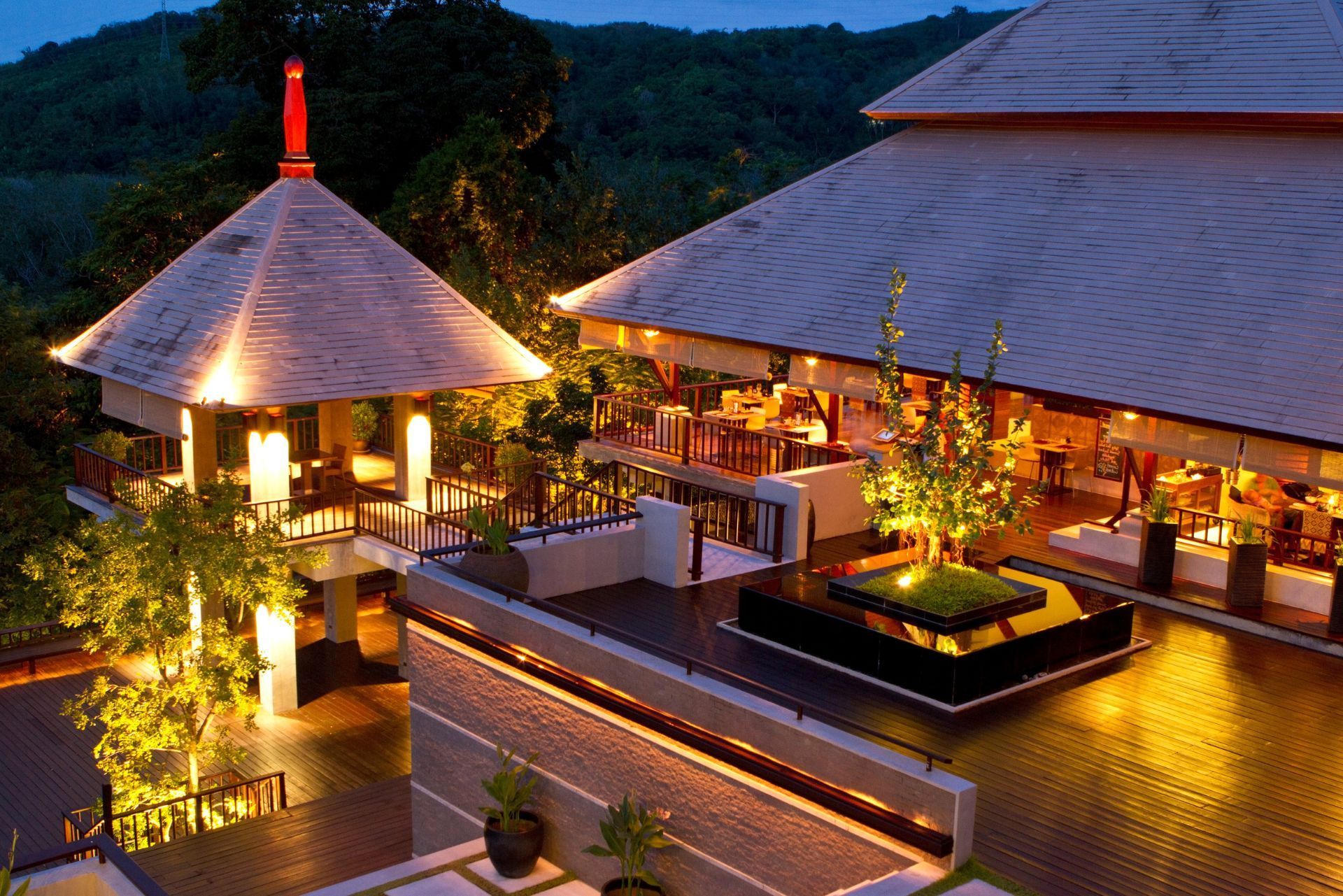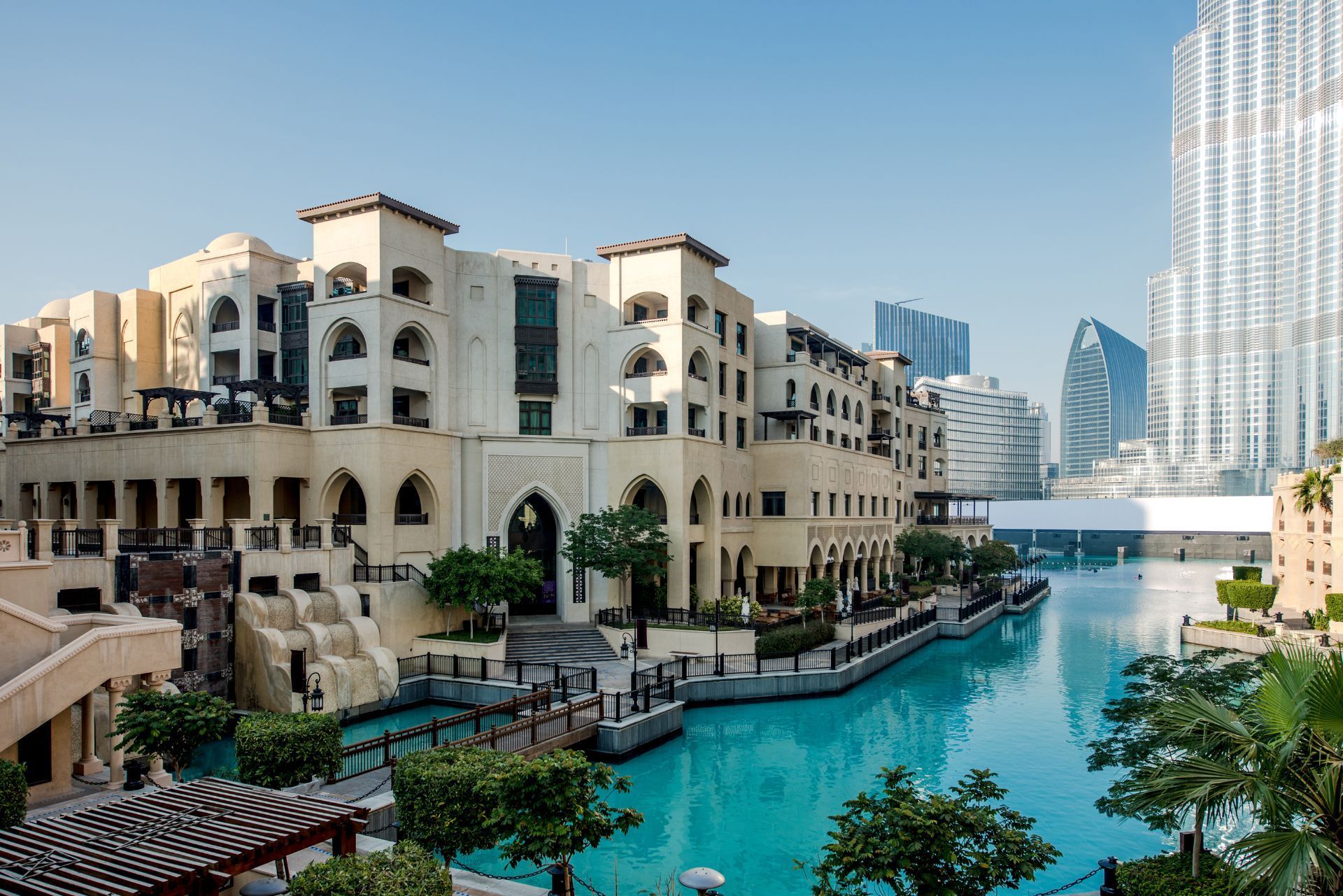Top 3 Recommended Policies

By: Lance Hale
Licensed Commercial Insurance Specialist
425-320-4280
Running a five-star resort on the craggy coasts of the Olympic Peninsula or among the evergreen peaks of the Cascades is equal parts art and high-stakes enterprise. Guests expect flawless service, immaculate suites, fine dining, and a seamless blend of adventure and relaxation. Behind that lavish façade sits a web of risks that can unravel an entire balance sheet in a single afternoon. Luxury resort insurance in Washington State exists to safeguard owners and investors from those sudden shocks, and to free managers to focus on hospitality rather than calamity.
The High-Stakes Reality of Operating a Luxury Resort in Washington
Hospitality revenue in the state surpassed $24 billion in 2023, with luxury resorts accounting for an outsized share of spending on rooms, spa services, weddings, and outdoor recreation. A single waterfront property can generate nightly rates of $750 to $3,000, which means a brief shutdown—whether because of a windstorm, a norovirus outbreak, or a cyberattack—can cost six figures in lost bookings in days. Add statutory wage obligations, debt service, and disappointed social-media influencers, and the pressure mounts quickly.
Compounding the stakes, many luxury resorts occupy remote or environmentally sensitive locations. Helicopter tours, marina slips, on-site distilleries, and even private seaplane docks add glamour but invite additional liabilities. Washington’s strict environmental statutes, guest-friendly consumer protection laws, and a famously litigious climate leave almost no margin for error. An ironclad insurance portfolio is no longer a prudent recommendation; it is a non-negotiable operating expense.
Moreover, the competition among luxury resorts is fierce, with each property striving to outdo the others in terms of unique offerings and exceptional service. Many resorts invest heavily in bespoke experiences, from curated culinary adventures featuring locally-sourced ingredients to exclusive wellness retreats that promise rejuvenation and relaxation. This arms race for luxury amenities not only drives up operational costs but also requires a keen understanding of market trends and guest preferences. As travelers increasingly seek personalized experiences, resorts must continuously innovate to remain relevant and desirable, often leading to significant financial risk if new initiatives do not resonate with their target audience.
In addition to the financial pressures, there is a growing emphasis on sustainability and corporate responsibility within the luxury hospitality sector. Guests are increasingly aware of their environmental footprint and expect resorts to adopt eco-friendly practices, such as reducing waste, conserving energy, and supporting local communities. This shift not only requires substantial investment in sustainable technologies and practices but also demands a transparent communication strategy to showcase these efforts. Failure to meet these expectations can result in reputational damage, further complicating the already intricate landscape of luxury resort management in Washington.
Core Insurance Coverages Every Washington Luxury Resort Needs
While each property is unique, most world-class resorts in the Evergreen State share a common baseline of coverage. The following core policies form the spine of a robust risk-transfer strategy.
Commercial Property Insurance
The craftsmanship that evokes Pacific Northwest elegance—hand-milled cedar beams, South African slate fire pits, imported glass chandeliers—demands an equally sophisticated property policy. Coverage limits should reflect replacement cost, not depreciated value, and extend to guest belongings and rare artwork. In Washington, be sure the policy specifically names windstorm, volcanic ash, and winter freeze as covered perils; some standard forms still exclude or sublimit these hazards. Additionally, as many resorts feature extensive outdoor amenities such as heated pools and landscaped gardens, it's crucial to ensure that these elements are included in the coverage. The unique environmental challenges of the region, including heavy rainfall and occasional landslides, further necessitate a thorough assessment of potential risks to the property.
General Liability Insurance
Between valet drop-offs, winery tours, and yoga classes on slick morning grass, bodily injury exposures abound. General liability covers third-party claims for injury or property damage, plus legal defense. Leading carriers now offer per-occurrence limits of $1 million to $5 million for luxury resorts, but high-net-worth clienteles often require umbrella or excess layers of $25 million or more to satisfy contract clauses with tour operators, event planners, and municipality-owned docks. Furthermore, with the growing trend of experiential travel, resorts are increasingly hosting unique events, from gourmet food festivals to outdoor concerts. Each of these activities introduces new liability considerations, making it essential for resorts to regularly review and update their coverage to reflect their evolving service offerings.
Liquor Liability Insurance
Washington’s craft-spirits boom means many resorts operate tasting rooms or host barrel-aged dinners. Under state dram-shop laws, an establishment can be held liable if an overserved patron causes injury after leaving the premises. Liquor liability covers defense costs and settlements stemming from alleged overservice, improper ID checks, or cocktail recipe errors that send guests to urgent care. As resorts often feature signature cocktails crafted from local ingredients, it’s also wise to implement staff training programs focused on responsible serving practices. This proactive approach not only mitigates risks but can enhance the resort's reputation as a responsible purveyor of fine beverages, attracting a discerning clientele.
Workers’ Compensation
Housekeepers, snow-shovel crews, sommeliers, and massage therapists all fall under Washington’s mandatory workers’ compensation system, administered by the Department of Labor & Industries. Rates fluctuate by job class; a line cook averages $0.74 per $100 of payroll, while ski-lift attendants can exceed $6.45 per $100. Resorts that invest in ergonomic housekeeping carts, slip-resistant footwear, and seasonal safety training often qualify for retrospective rating refunds that return up to 20 percent of premiums. Moreover, fostering a culture of safety not only protects employees but also enhances guest experiences, as well-trained staff are better equipped to respond to emergencies, ensuring a seamless and enjoyable stay for all visitors.
Cyber and Data Breach Insurance
Luxury travelers entrust personal data—passport scans, biometric spa profiles, and premium credit-card details. A 2023 Ponemon Institute report found the average hospitality breach cost $164 per record, higher than retail and manufacturing. A dedicated cyber policy funds forensic investigations, guest notification and credit-monitoring services, public relations, and regulatory fines under Washington’s Consumer Protection Act. Additionally, as resorts increasingly adopt smart technology for room controls and guest services, the potential attack surface expands. Therefore, it is imperative for resorts to not only secure their digital infrastructure but also to conduct regular cybersecurity training for staff, ensuring they are vigilant against phishing attempts and other cyber threats.
Business Interruption and Extra Expense
If a Cascadia subduction zone tremor triggers structural inspections, or a kitchen fire knocks out the main restaurant during peak wedding season, revenue can evaporate overnight. Business interruption insurance reimburses net income plus continuing expenses, while extra-expense coverage pays for temporary kitchens, portable laundry, or chartered shuttle buses to move guests between sister properties. In addition, resorts should consider the impact of seasonal fluctuations in occupancy rates; having a solid business interruption plan can help mitigate losses during off-peak times, ensuring financial stability year-round. Furthermore, maintaining strong relationships with local vendors can facilitate quicker recovery efforts, allowing resorts to resume normal operations with minimal disruption.
Environmental and Pollution Liability
Pristine forest settings delight guests but expose resorts to runoff regulations and sensitive salmon habitats. An underground heating-oil leak, chlorinated-pool discharge, or even an abandoned asbestos pipe can trigger multimillion-dollar cleanup orders from the Department of Ecology. Specialized environmental liability policies address both sudden and gradual pollution, including third-party bodily injury claims and natural-resource damages. As sustainability becomes a focal point for luxury travelers, resorts should also consider integrating eco-friendly practices into their operations, such as waste reduction initiatives and water conservation programs. These efforts not only enhance the resort's appeal but can also lead to lower insurance premiums, as insurers often reward environmentally responsible practices with favorable terms and conditions.
Unique Risk Factors in Washington State
Climate, geography, and regulation give Washington a particular set of hazards. Recognizing these nuances helps tailor coverage and avoid costly blind spots.
First, the state spans multiple climate zones. Western counties endure atmospheric rivers and 70-mph coastal gusts, while the eastern slopes face drought-driven wildfires. The National Interagency Fire Center recorded 674 wildfires in Washington in 2022, burning more than 140,000 acres—figures that push insurers to impose higher deductibles or separate wildfire sublimits on properties surrounded by heavy timber. The varied climate also affects agriculture, with farmers in the Yakima Valley facing challenges such as late frosts and heat waves, which can impact crop yields and insurance needs. This agricultural variability necessitates specialized coverage options to protect against both natural disasters and market fluctuations.
Second, seismic activity cannot be dismissed. The Washington State Seismic Safety Committee states there is a 15 percent chance of a magnitude-9.0 Cascadia megathrust earthquake in the next 50 years. Standard property forms exclude earthquake damage; a standalone earthquake endorsement or policy is necessary, often with percentage-based deductibles tied to insured value. Additionally, the state has numerous fault lines, including the Seattle Fault and the Tacoma Fault, which can lead to localized tremors that may not be as widely recognized but still pose significant risks to infrastructure and homes. As a result, urban planners and insurers must collaborate closely to ensure that buildings are retrofitted to withstand seismic events, further complicating the landscape of risk management in the region.

Estimating Premiums and Managing Insurance Costs
Budgeting for insurance begins with accurate premium projections. For an upscale 80-room mountain resort with annual gross revenues of $42 million, carriers in 2024 typically quote:
• Commercial property: $0.45–$0.65 per $100 of insured value.
• General liability: $30,000–$60,000 per $1 million of limit, depending on amenities.
• Excess/umbrella: $20,000–$40,000 for each additional $10 million.
• Cyber: $0.08–$0.15 per guest record.
• Environmental: Flat premiums start at $12,000 annually.
Premiums are climbing at roughly 6–9 percent a year, yet loss-control measures can blunt the rise. Insurers reward documented wildfire-mitigation plans, sprinkler retrofits in historic lodges, and network segmentation that keeps property-management systems separate from guest Wi-Fi. Multiyear master programs, higher self-insured retentions, and participation in captive arrangements can reduce long-term cost of risk by 15–20 percent while providing more transparent data on claim drivers.
In addition to these proactive measures, resorts can enhance their risk management strategies by investing in employee training programs focused on safety and emergency preparedness. By equipping staff with the knowledge and skills to handle potential crises—such as natural disasters or medical emergencies—resorts not only protect their guests but also demonstrate to insurers their commitment to risk mitigation. Furthermore, implementing regular safety audits and maintenance checks can help identify vulnerabilities before they lead to costly claims, thereby fostering a culture of safety that resonates with both employees and visitors alike.
Moreover, as the hospitality industry increasingly embraces technology, resorts should consider the implications of digital advancements on their insurance needs. For instance, the integration of smart technologies, such as IoT devices for monitoring environmental conditions or advanced security systems, can significantly reduce the likelihood of incidents that may lead to claims. Insurers may view these innovations favorably, potentially leading to lower premiums. By staying ahead of technological trends and adapting their insurance strategies accordingly, resorts can not only safeguard their assets but also enhance the overall guest experience, creating a win-win situation for both the business and its patrons.
Claims Scenarios: Lessons From the Evergreen State
A coastal resort near La Push suffered $4.7 million in structural and business-interruption losses after a wind-blown saltwater surge corroded its geothermal heat exchangers. The property policy responded because “flood” was expressly endorsed, but only after a 15-day interruption waiting period that frustrated management.
In Chelan County, a guest fractured an ankle navigating uneven stone steps to a wine-cave venue. The resulting liability claim, including pain-and-suffering damages, settled for $680,000. An additional $92,000 in defense costs drained the primary liability limit, illustrating why many luxury operators carry at least five times the standard commercial umbrella suggested by brokers.
Meanwhile, a ransomware gang exploited an outdated reservation plugin at a San Juan Islands eco-lodge. Attackers encrypted point-of-sale servers and threatened to leak celebrity client itineraries. A cyber policy funded the $125,000 forensics bill, a $250,000 extortion payment negotiated down to $80,000, and $140,000 in crisis-communications fees—proof that intangible risks can swiftly equal or eclipse brick-and-mortar losses.
Risk Management Strategies Beyond Insurance
Coverage pays for what goes wrong, but proactive risk management keeps reputations intact. Many Washington resorts now integrate lightning-detection systems and real-time smoke forecasts to guide outdoor operations. Likewise, remote-camera analytics detect trespassers in sensitive wildlife corridors, limiting potential environmental fines.
Vendor contracts warrant scrutiny. Shuttle operators, whale-watch tour partners, and even pop-up celebrity chefs should name the resort as an additional insured with primary, non-contributory wording. Clear indemnity clauses close the loop. Annual tabletop drills involving local fire districts, tribal authorities, and Coast Guard stations fine-tune emergency response and build invaluable community goodwill.

Selecting the Right Insurance Partner
Only a handful of carriers maintain dedicated hospitality divisions with authority to tailor manuscript endorsements. Seek out brokers who specialize in luxury lodging and can demonstrate access to these underwriters. Claims advocacy teams matter; the hotel that waits three business days for a field adjuster after a sprinkler rupture risks further damage and guest morale plummets. Finally, insist on carriers rated A- or better by AM Best to ensure financial resilience after a regional catastrophe.
Coverage Review Checklist
Before high season begins, senior management should verify:
• Updated property values reflecting supply-chain inflation.
• Earthquake and flood endorsements in line with lender covenants.
• Current certificates of insurance from all event vendors.
• Liquor-service training logs to document staff compliance.
• Multi-factor authentication on all reservation systems.
• Clear crisis-communications protocol assigning media spokespeople.
Frequently Asked Questions
Is earthquake insurance mandatory for resorts in Washington?
State law does not mandate earthquake coverage, but lenders financing coastal or mountain properties often require it. Given the Cascadia fault risk and high replacement costs of luxury finishes, most investors view earthquake insurance as essential rather than optional.
How long does business-interruption coverage last?
Standard forms provide 12 months of indemnity, but many upscale resorts extend limits to 18 or 24 months. Rebuilding a bespoke spa wing or sourcing Italian marble can take longer than projected, so an extended period of liability endorsement is prudent.
Can a resort be held liable for guests injured during guided outdoor excursions?
Yes. Even when tours are subcontracted, plaintiffs frequently target the deepest pockets. Written waivers help, but only commercial general liability, umbrella, and possibly professional liability policies fully protect the resort from negligence allegations stemming from guided hikes, ski lessons, or sailing charters.
Key Takeaways
Washington’s luxury resorts occupy breathtaking—but risk-laden—settings. From seismic shocks to sophisticated hackers, threats evolve faster than the average policy cycle. A comprehensive insurance program combines property, liability, specialty, and excess layers drafted for the state’s distinctive legal and environmental landscape. Balanced with disciplined loss-control, vigilant vendor management, and alliances with expert brokers and carriers, that program preserves both guest delight and long-term profitability. Investors, managers, and front-line staff who treat insurance as a strategic asset rather than a commodity turn uncertainty into a competitive advantage in the crowded luxury market of the Evergreen State.

